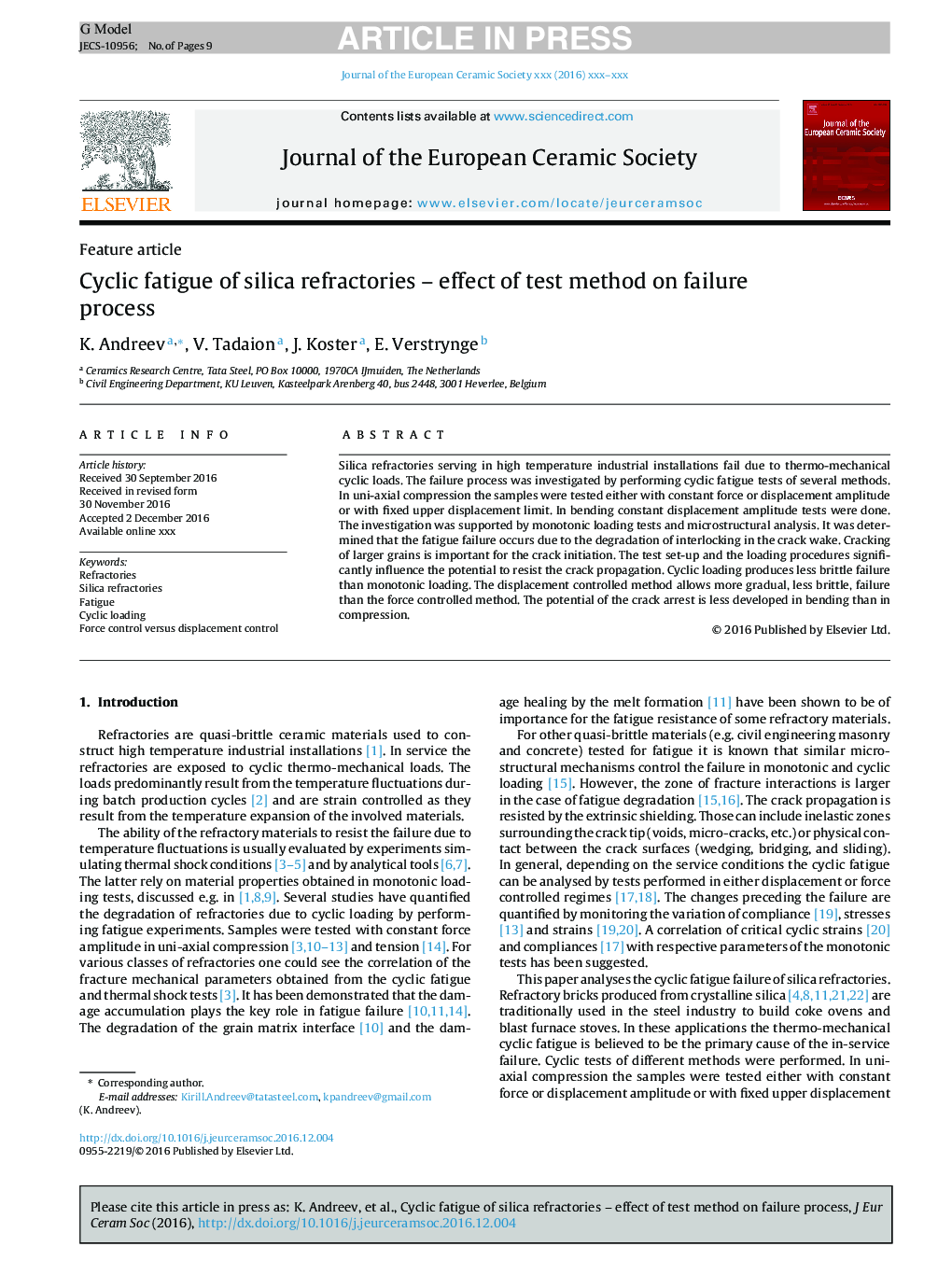| Article ID | Journal | Published Year | Pages | File Type |
|---|---|---|---|---|
| 5440711 | Journal of the European Ceramic Society | 2017 | 9 Pages |
Abstract
Silica refractories serving in high temperature industrial installations fail due to thermo-mechanical cyclic loads. The failure process was investigated by performing cyclic fatigue tests of several methods. In uni-axial compression the samples were tested either with constant force or displacement amplitude or with fixed upper displacement limit. In bending constant displacement amplitude tests were done. The investigation was supported by monotonic loading tests and microstructural analysis. It was determined that the fatigue failure occurs due to the degradation of interlocking in the crack wake. Cracking of larger grains is important for the crack initiation. The test set-up and the loading procedures significantly influence the potential to resist the crack propagation. Cyclic loading produces less brittle failure than monotonic loading. The displacement controlled method allows more gradual, less brittle, failure than the force controlled method. The potential of the crack arrest is less developed in bending than in compression.
Keywords
Related Topics
Physical Sciences and Engineering
Materials Science
Ceramics and Composites
Authors
K. Andreev, V. Tadaion, J. Koster, E. Verstrynge,
